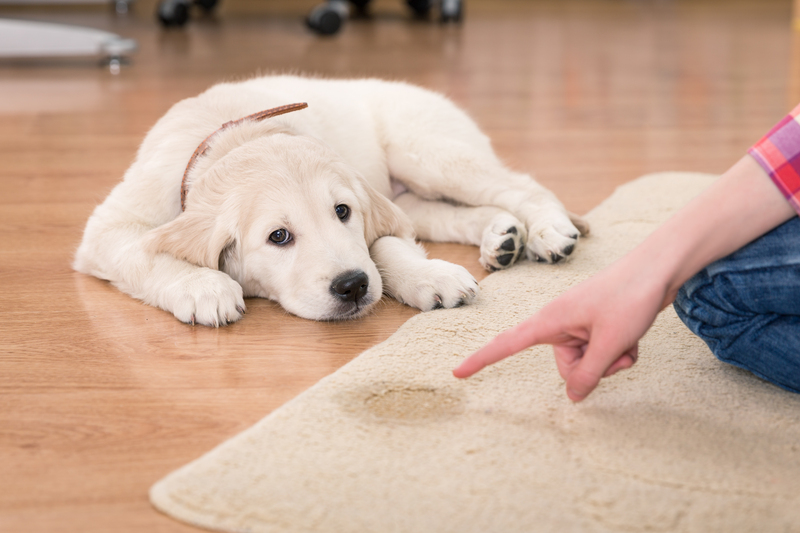Win the Battle Against Stubborn Damp Odors
Posted on 03/09/2025
Win the Battle Against Stubborn Damp Odors
Musty smells and persistent damp odors can make even the most beautiful home feel uncomfortable and unhealthy. Whether it's that lingering scent in the basement, the odd aroma in wardrobes, or an off-putting odor in the bathroom, stubborn damp odors can be a challenge to eradicate. However, with the right knowledge and a strategic plan of action, you can bid farewell to these unpleasant smells for good. This guide offers a comprehensive look at how you can combat persistent and musty damp odors, restoring freshness and peace to your living spaces.
Understanding the Root Causes of Damp Odors
Before you eliminate stubborn damp odors, it's crucial to know where they come from. Damp smells are often described as musty, earthy, or reminiscent of wet fabric. They signal excess moisture--a breeding ground for mold, mildew, and bacteria. Here are common sources:
- Poor ventilation. Areas with little air movement, like basements and closets, are prone to moisture buildup.
- Leaks and seepage. Plumbing issues, roof leaks, or groundwater infiltration saturate surfaces, promoting odors.
- Condensation. On cold surfaces such as windows or exterior walls, condensation can accumulate and feed mold growth.
- Wet materials. Carpets, upholstery, or insulation that become wet--whether from spills, flooding, or humidity--trap moisture and emit odors.
- Inadequate waterproofing. Poorly sealed foundations or walls enable external rainwater to enter your home.
These conditions often lead to the proliferation of mold spores and bacteria, which release compounds contributing to those persistent, hard-to-remove odors.

Why Damp Odors are a Problem Beyond Smell
A musty odor isn't just a nuisance. It can signal deeper issues--ones that threaten both your home's integrity and your family's health.
- Health risks: Mold spores and bacteria can spark allergies, asthma, headaches, and respiratory infections, especially in young children and elderly family members.
- Structural damage: Persistent dampness weakens wood, plaster, and insulation, costing you money in repairs.
- Decreased property value: Strong odors often turn off buyers and might even decrease your property's value.
- Mold propagation: Unchecked, mold growth can spread rapidly throughout your home.
Removing, preventing, and winning the war against stubborn musty odors is crucial for a safe, comfortable home.
Identify the Source of Odor--Your First Step to Victory
Before you can clear stubborn damp odors, you must pinpoint the true source. Sometimes the culprit is obvious--a visible water stain or an unmistakable leak. Other times, it requires detective work.
Essential Tips to Track Down Odor Sources:
- Thorough inspection: Check basements, attics, crawlspaces, bathrooms, under sinks, and any other damp-prone spots.
- Look for visible mold: Black or green patches on walls, ceilings, or floors indicate active growth.
- Notice discoloration or peeling: Wallpaper or paint bubbling or peeling could hide hidden moisture.
- Check stored items: Cardboard boxes, stored clothes, and old furniture can hold moisture and trap odors.
- Don't forget HVAC: Air conditioners and heaters, if not maintained, can harbor and circulate musty smells.
Key Areas to Examine:
- Behind large furniture
- Under carpets and rugs
- Around windows and doors
- In laundry rooms and bathrooms
- Basement corners and crawlspaces
- Inside closets and cabinets
Proven Methods to Remove Persistent Damp Odors
Once the source is identified, it's time to banish stubborn damp odors and prevent their return with these effective strategies:
1. Dry Out Moisture Completely
- Ventilation: Open windows, doors, and use fans to promote air flow.
- Dehumidifiers: Control humidity levels by running dehumidifiers, especially in basements and bathrooms.
- Fix leaks: Address any plumbing or roof leaks immediately.
- No wet laundry indoors: Dry clothes outside or in well-ventilated, moisture-resistant areas.
2. Deep Clean Affected Areas
- Scrub with vinegar or baking soda: These natural cleaners neutralize odors and kill mold and bacteria.
- Use specialized mold removers: For larger infestations, consider professional-grade or EPA-registered fungicidal cleaners.
- Launder fabrics: Wash musty linens, curtains, or clothes with hot water and vinegar to eliminate odors.
- Shampoo carpets: Rent or use a steam cleaner to deep-clean carpets and upholstery.
3. Absorb and Neutralize Odors
- Activated charcoal: Place charcoal briquettes or bags in closets and damp rooms to absorb musty odors.
- Baking soda: Sprinkle on carpets, leave overnight, and vacuum thoroughly.
- Coffee grounds: Place bowls of used coffee grounds in affected areas for natural deodorizing.
- Odor absorbers: Use commercial products designed to remove, not just mask, persistent damp smells.
4. Replace Severely Affected Materials
- Remove damaged drywall: If drywall is moldy or waterlogged, it may need replacing along with any affected insulation.
- Swap out old carpets: Carpets that have suffered water damage rarely lose their odor completely.
- Replace or treat wood: Heavily stained or decaying wood should be professionally restored or swapped out.
5. Prevent Recurrence
- Seal cracks and windows: Weatherproof your basement and exterior walls to block future moisture.
- Regular ventilation: Always use exhaust fans in bathrooms, laundry rooms, and kitchens.
- Manage indoor humidity: Aim for 30-50% relative humidity using smart monitors or humidistats.
- Maintain gutters and downspouts: Ensure rainwater is directed away from your home's foundation.
Specialized Solutions: Professional vs. DIY for Tough Damp Odors
While DIY odor removal is effective for minor issues, some stubborn musty smells resist even the most thorough cleaning. When is it time to call the experts?
- Extensive or recurring mold: Large infestations or black mold may require professional remediation.
- Hidden leaks: If you can't pinpoint a leak, a plumber with moisture detection tools is essential.
- Persistent odors despite cleaning: Deep, embedded smells in flooring, HVAC systems, or wall cavities often need expert deodorizing.
Professionals use industrial equipment such as negative air machines, thermal foggers, and ozone generators. They can also recommend advanced waterproofing and restoration services for severely damaged homes.
Natural Remedies to Freshen Up Your Spaces
For households preferring non-toxic and environmentally friendly options, several natural solutions can help combat stubborn and musty odors:
- Essential oils: Lavender, tea tree, and eucalyptus oils have antimicrobial properties. Add a few drops to a diffuser or cleaning solution.
- Lemon juice: Its citric acid neutralizes smells and leaves a fresh scent.
- White vinegar: Bowls of vinegar left in the room overnight absorb odors naturally.
- Sunlight: Hanging textiles and cushions outside on sunny days reduces moisture and bacteria.
Recipe for a Natural Deodorizing Spray
- 2 cups water
- 1/2 cup white vinegar
- 20 drops essential oil (lavender or tea tree)
Mix ingredients in a spray bottle. Use on hard surfaces or in the air to reduce stubborn damp odors.
How to Prevent Damp Smells from Returning
Winning the battle against persistent musty odors means more than just a one-off cleaning--I requires consistent, proactive care.
Long-Term Dampness Control Checklist
- Regularly check for leaks: Inspect under sinks, behind appliances, and in the attic after heavy rains.
- Keep air moving: Even basic oscillating fans help prevent stagnant air in trouble spots.
- Store items smartly: Avoid putting boxes or clothes directly on basement and crawlspace floors--use shelves or risers.
- Maintain appliances: Regularly service washing machines, water heaters, and HVAC equipment.
- Insulate against condensation: Pipe wraps and wall insulation minimize moisture buildup.
- Monitor humidity: Use a hygrometer and act quickly if levels rise above 60%.
Combatting Damp Odors in Specific Parts of Your Home
Basements & Crawlspaces
- Improve drainage: Ensure gutters and grading direct water away from your home.
- Install vapor barriers: Lay heavy-duty plastic sheets over crawlspace dirt floors.
- Use a sump pump: In flood-prone basements, a sump keeps water from pooling.
Bathrooms
- Wipe down surfaces: After showering, dry tiles and tub surrounds.
- Fix drips promptly: Address leaky faucets or toilet seals.
- Replace old grout: Mold can lurk in bathroom grout--regrout as needed.
Closets
- Use moisture-absorbing packets: Silica gel or calcium chloride pouches reduce excess humidity.
- Space out clothes: Don't pack clothes tightly; allow airflow.
- Regularly air out: Leave closet doors open periodically to ensure fresh air exchange.

Common Myths About Damp Odor Elimination
-
Myth: Air fresheners solve the problem.
Truth: They only mask, rather than eliminate, persistent damp odors. -
Myth: Bleach is always the best solution.
Truth: Bleach kills surface mold, but isn't effective for porous materials and may worsen air quality when overused. -
Myth: Small leaks won't cause major issues.
Truth: Even tiny drips can lead to big problems if left unaddressed.
Conclusion: Enjoy a Fresh, Healthy Home Free from Damp Odors
Winning the battle against stubborn damp odors starts with understanding their causes and embracing both immediate and long-term solutions. From moisture control to deep cleaning, strategic storage, and preventive maintenance, you have all the tools you need to ensure your home stays fresh and inviting. Say goodbye to musty smells--and hello to pure, clean air where your family can thrive.
Ready to reclaim your home from damp odors? Start today--inspect, clean, restore, and enjoy lasting freshness!



